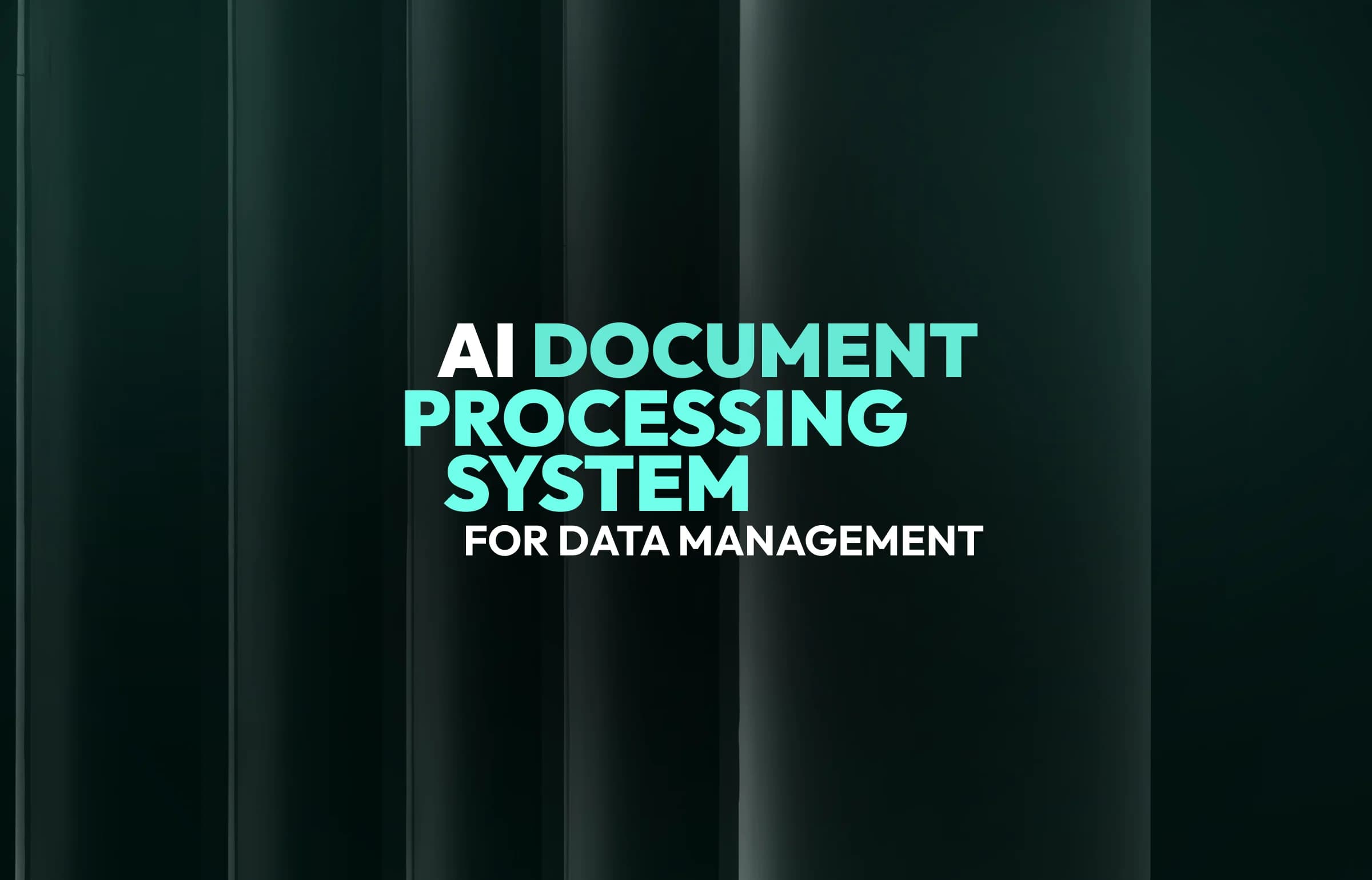
All AI in Banking: Use Cases, Features, Challenges, and Benefits for Custom Development in 2025
February 28, 202510 min read
AI in the banking industry will drive revenue growth with custom development solutions. In 2027, banks could generate an additional 12-17% in pre-tax profits, generating up to $180 billion in revenue thanks to AI-enabled productivity improvements. 8 in 10 respondents expect generative AI to improve productivity and increase revenue by 5% or more within three to five years.
In 2025, AI continues to influence how banks operate, from automating processes to offering personalized financial solutions. This article explores key use cases, standout features, challenges, and the significant benefits of integrating AI and machine learning in banking solutions.
What is AI in Banking?
Artificial intelligence in banking means the use of AI technologies to enrich efficiency and security. It can:
With generative AI, banks meet growing customer expectations with highly customized and efficient services.
- Detect fraud;
- Assess risk;
- Automate routine processes like loan approvals and account management;
- Find predictive insights into customer behavior and market trends, etc.
Artificial intelligence employs machine learning and natural language processing to lower operational costs and enhance decision-making.

What is Generative AI in Banking?
Generative AI in banking means the use of AI models like GPT and GANs to create content and enrich customer experiences. It can:
- Generate personalized financial advice;
- Simulate market scenarios;
- Craft tailored marketing messages;
- Improve chatbots;
- Automate documentation;
- Develop custom financial products based on customer data;
- Detect unusual patterns;
- Generate risk models.
Key Statistics of AI in Banking and Payments
The world is moving towards AI. Banks, FinTech, governments, B2B and B2C industries, experts, and ordinary people use AI differently. Here are the statistics you must be aware of:
- The finance sector finds itself at the center of AI integration, exhibiting one of the highest adoption rates across industries;
- AI in the banking market is estimated to grow at a CAGR of 17.96%, attaining $75.357 billion by 2030 from $32.988 billion in 2025;
- In 2023, the financial services industry invested an estimated 35 billion U.S. dollars in AI, with banking leading the charge, accounting for approximately 21 billion U.S. dollars;
- Generative AI could significantly impact the banking sector, with the total potential added value ranging from $200 to $340 billion;
- Among the largest banks in the Americas and Europe, Capital One leads in AI adoption, followed by JPMorgan Chase and the Royal Bank of Canada.
AI and the banking sector can't exist separately anymore. Banks that don't integrate AI into their processes lose their time and competitiveness, depriving themselves of even the possibility of catching up with the competition in the future. AI is already transforming e-commerce in unimaginable ways. The same happens with banks.
Use Cases of AI in Banking
Let's take a look at the top 8 AI applications in the banking industry. These use cases will help you understand how AI is influencing the banking industry.
Cybersecurity and Fraud Detection
Artificial intelligence can identify cyberattack patterns and signs by analyzing network traffic, user activity, and other data. This allows banks to respond to potential threats in real time, block suspicious activities, and minimize the possible consequences of cyberattacks.
Artificial intelligence is used in banking to detect suspicious transactions. Modern machine learning algorithms analyze large data sets, revealing unusual customer behavior that could point to fraud. By focusing on shifting patterns, AI helps banks develop fraud models that can spot emerging threats. This makes it possible to identify new types of fraud and take quick action, ultimately preventing financial losses for both banks and customers.
Danske Bank found that their fraud detection service revealed only 40% of fraud and produced 1,200 false positives daily, resulting in 99.5% of the bank's investigations having nothing to do with fraudulent activity. Artificial intelligence was implemented to improve the situation. The system, based on deep learning technology, reduced the number of false positives by 60%, which significantly reduced the workload of employees. At the same time, the detection of real cases of fraud increased by 50%.
AI-Based Chatbots
AI is transforming banks' customer service through chatbots, providing customers with quick and accurate answers to questions and solutions to various problems without live operators. This ensures convenience and availability of service at any time of the day, reduces the burden on contact centers, and optimizes service costs.

The use of AI in chatbots also creates a personalized service experience by analyzing customer preferences and offering personalized solutions and services. This increases customer satisfaction, improves their relationship with the bank, and increases loyalty.
If you are searching for a reliable tech partner, SapientPro's team can help you develop an AI-based chatbot. We have 8+ years of experience in AI technology and chatbots, so we can implement the boldest ideas!
Loan and Credit Decisions
Artificial intelligence in banking is effectively automating the credit-scoring process, becoming a key tool for banks to assess the creditworthiness of borrowers. Advanced ML algorithms analyze data, including credit history, financial standing, and other factors, to create accurate and objective credit risk models.

AI allows banks to automate credit assessment, reducing decision-making time. Algorithms learn from large amounts of data, identifying complex relationships and improving predictions of the loan repayment likelihood. As a result, banks can more accurately determine a borrower's creditworthiness, reducing default risk and improving loan portfolio management.
UnionBank Philippines has introduced an innovative AI-based solution to optimize the loan application process. The traditional rules-based approach often resulted in long approval times and the rejection of many applications. To address this problem, the bank turned to a new credit scoring model that utilizes AI.
This model considers various customer data, including alternative sources such as geospatial data and open government macro and socio-economic data. Through this approach, UnionBank is now able to lend to a wider range of customers, including those who previously did not qualify, using traditional assessment methods.
Financial Analytics
AI makes financial analytics more accurate and informative. Generative AI models can:
- Analyze huge volumes of financial data;
- Identify hidden patterns;
- Predict future trends.
Generative AI automates the preparation of financial reports, reducing time and the likelihood of errors. Through the use of generative AI, banks get timely and accurate financial analytics. It helps them make informed decisions based on up-to-date information.
HR Automation
One example of AI's application in HR is using ML algorithms to analyze resumes and select candidates for vacant positions. This allows for the automation of the process of reviewing and sorting large volumes of resumes. As a result, automated identifying the most suitable candidates reduces the time spent hiring new employees.

Customer Experience
With the help of ML algorithms and data analytics, banks can create unique profiles of customers, taking into account their preferences, interaction history, and financial needs. This allows them to offer customers customized products, services, and solutions tailored to their unique needs and life situations.
AI improves customer experience in many ways like with voice assistance. AI-based voice assistants allow customers to interact with the bank through voice commands, simplifying the process of getting account balance information, making transactions, and getting advice on managing finances.
With speech recognition functionality and ML algorithms, voice assistants can adapt to individual customer needs and provide personalized support, significantly improving the customer experience and increasing customer satisfaction. The creation of AI-powered voice assistants also helps to reduce contact center workload and improve service efficiency. Banks get a competitive advantage in the financial services market.
Process Automation
Artificial intelligence is changing employee work processes in banking, offering innovative solutions to optimize operations and increase productivity. Automating routine tasks is a crucial use of artificial intelligence for boosting worker performance. ML algorithms can be used for text recognition and document analysis, which allows automating the processes of data entry, archiving, and classification of documentation, reducing the time spent on these operations and the probability of errors.
Deutsche Bank uses AI solutions to automate manual processes and to improve document classification, extraction, and validation tasks.

Anti-Money Laundering
AI increases the breadth of monitoring suspicious transactions by an order of magnitude. It is possible to observe the connections not only between the sender and receiver of funds, but also between third parties, and trace entire chains of suspicious transactions. This will help bankers, anti-corruption agencies, and tax authorities track down illegal schemes like transferring money to sub-sanctioned people from Russia through a chain of intermediaries.
Standard Chartered Bank uses AI-based transaction monitoring systems to improve its AML efforts and comply with regulatory requirements.
Other Applications
Other AI applications in banking industry include:
- Speech recognition;
- Sentiment analysis;
- Anomaly detection;
- Risk and portfolio management;
- Recommendations;
- Translation;
- Monitoring market trends;
- Data collection and analysis;
- Data science and analytics;
- Predictive modeling;
- Regulatory compliance.
SapientPro can help you integrate AI technology into your banking operations. Our 8+ years of experience in the industry will ensure your company gets the best solutions that generate income and support processes. Let's team up!
Challenges in Adopting AI & ML in the Banking Sector
Despite the benefits AI brings to banks, there are some challenges with AI integration. Here is what is stopping AI banking solutions from easily spreading worldwide.
1. Data Quality and Governance
Banks often manage data from multiple sources, such as transaction records, customer profiles, and external markets. This leads to inconsistencies and duplication. AI models require clean, structured data, but fragmented systems and poor governance practices make this difficult. For example, outdated customer data can result in inaccurate risk assessments or flawed fraud detection.
2. Regulatory Compliance
AI adoption in banking must comply with laws like GDPR (data protection) and PCI DSS (payment security). Challenges include ensuring algorithms are transparent and auditable, especially when used for credit scoring or fraud detection. Non-compliance can result in fines or customer mistrust, as seen in cases where AI models exhibit racial bias in mortgage underwriting decisions.
3. Talent Shortages
The banking sector lacks sufficient AI-trained professionals, such as machine learning engineers and data scientists. This shortage forces banks to either invest heavily in training internal staff or outsource, increasing operational costs and slowing AI project timelines. For instance, deploying predictive analytics models often requires niche expertise unavailable in-house.
4. Integration with Legacy Systems
Many banks still rely on mainframe systems. They lack the flexibility to integrate AI tools. Retrofitting these systems to support AI capabilities requires costly and time-consuming updates. For example, integrating AI-powered chatbots often demands middleware to bridge old systems with new technologies.
Benefits of AI in Banking
Here are the main benefits of AI in banking and payments:
- Automation. AI automates repetitive tasks like document processing, loan approvals, account updates, etc. For instance, AI-driven bots can process thousands of transactions daily without human intervention, saving banks significant labor costs and reducing errors.
- Accuracy. AI ensures precision in processes like fraud detection and credit scoring. ML algorithms analyze vast datasets to spot anomalies, minimizing false positives. For example, AI systems can identify unusual spending patterns instantly.
- Efficiency. AI simplifies workflows by optimizing resource allocation and decision-making. For example, predictive analytics helps banks target the right customers with tailored financial products, improving marketing ROI.
- Speed. AI accelerates time-consuming tasks such as loan approvals and customer inquiries. Chatbots and AI systems handle queries in real-time.
- Availability. Users can resolve queries about account balances or transactions anytime. This constant availability increases customer satisfaction without additional staffing costs.
- Innovation. AI stimulates innovation by enabling new financial services, like personalized wealth management or automated investment platforms.
Custom AI Banking Software Development Guide for 2025
Let's take a look at what the typical AI banking solution development process looks like.
1. Define the Goals and Use Cases
Begin by identifying the primary objectives for your AI banking solution. Determine the specific problems the app will solve and how AI can improve operations or customer experience. Key questions to address:
- What customer pain points will the software address?
- What specific banking processes will AI improve?
- What measurable outcomes are expected?
Clearly defined goals ensure your AI banking solution development process aligns with business needs and delivers tangible results.
2. Plan Architecture and Tech Stack
Selecting the right architecture and tech stack is crucial for building scalable and secure AI banking software. The architecture should accommodate high data loads and ensure seamless integration with existing systems. Essential considerations:
- Choose between cloud-based or on-premises infrastructure;
- Go for programming languages like Python or Java for AI modules;
- Use frameworks like TensorFlow or PyTorch for machine learning.
A well-planned architecture prevents scalability issues and ensures smooth performance as your AI banking software evolves.
3. Develop Data Pipelines
Strong data pipelines are the backbone of any AI banking solution, as they enable clean data collection, processing, and storage. Focus on building pipelines that can handle large datasets efficiently. Steps to create data pipelines:
- Collect data from internal and external sources;
- Clean and preprocess data to ensure quality;
- Use databases like PostgreSQL or MongoDB for storage.
Effective pipelines ensure your AI models are trained on reliable data, improving their accuracy and performance.
4. Build Core AI Features
This step involves integrating AI functionalities that align with your defined goals. Key AI features to develop:
- Machine learning models for risk assessment;
- Natural language processing for chatbots and voice assistants;
- Predictive analytics for personalized recommendations.
Focus on user-centric features to maximize the software’s value to customers and banking operations.
5. Test and Validate
Thorough testing ensures the software operates reliably and meets regulatory standards. Include both functional and non-functional testing during this phase. Here is what we recommend you to do:
- Perform unit and integration tests for each feature;
- Conduct stress tests to evaluate scalability;
- Ensure compliance with banking regulations like GDPR or PCI DSS.
Testing and validation help identify and address issues early, saving time and resources during deployment.
6. Deploy and Maintain
Once testing is complete, deploy the software to production. Continuous monitoring is needed to address emerging challenges and improve performance. Our deployment checklist:
- Use CI/CD pipelines for a smooth rollout;
- Monitor software with tools like Splunk or Datadog;
- Plan regular updates to incorporate new features and compliance changes.
A strong maintenance strategy keeps your AI banking software secure and efficient.
How Much Does AI Banking App Development Cost?
The cost of developing an AI-powered banking app depends on factors like app complexity, features, development team rates, and timelines. Below is a sheet outlining approximate costs based on key factors to help you understand the investment required for such a project. Note that you'll only get a detailed and precise estimate after contacting our experts.
Cost Factor | Description | Estimated Cost Range (USD) |
App Complexity | Basic features (chatbots, account tracking) vs. advanced AI (fraud detection). | $50,000–$150,000 |
Features and Integrations | APIs for payments, advanced analytics, voice commands, etc. | $20,000–$100,000 |
Development Team Location | Offshore developers are cheaper than onshore teams. | $40,000–$200,000+ |
AI Model Training | Costs depend on data size and complexity of AI models. | $30,000–$100,000 |
Testing and Maintenance | Ongoing updates, compliance testing, and bug fixes. | $10,000–$50,000 per year |
Total Project Cost | Estimated overall cost for an AI banking app. | $100,000–$500,000+ |
Future Trends of AI in Banking
Based on the industry's movement, key future trends of AI in banking and payments include:
- Hyper-personalization;
- Autonomous financial management;
- Voice banking;
- AI-powered customer insights;
- AI-powered compliance;
- Open banking improvements.
These trends show that AI will continue to improve the banking industry. We will see more new opportunities for innovation that AI and machine learning in banking bring.
Partner with SapientPro to Build Your AI Banking Solution
SapientPro is your reliable banking software development team that can integrate and develop custom AI-powered solutions from scratch. We'll help you bring any idea to life according to the highest industry standards, supporting your business across all operations.
Partner with us to get a trusted tech partner who will help you get the most of modern technology.




